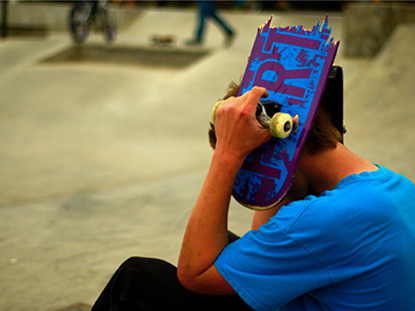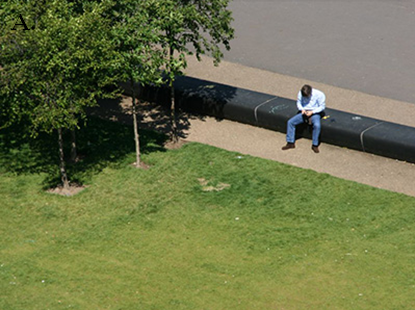A Case Study By Shirley Kadouri, Tarot Cards Augmented Coach, SWITZERLAND

Flipit Workshop Framework
My client, Wenny, is an old colleague who used to be a direct report a few years ago, and since we maintained contact. We connect regularly and exchange professional as well as personal thoughts and ideas. Wenny kindly agreed to be my client while I was practicing to become a coach through the ICA Vocational program and was very excited about the idea of being coached.
Wenny agreed to try the FlipIt framework to help her identify what perspective she is currently taking towards her challenge and discover the ‘flip it alternative’, which will ideally help her find new ways to tackle it more effectively.
We exercised FlipIt at the end of our session, after having a “traditional” coaching conversation in which we discussed the challenge. Consequently, Wenny did the exercise with the insights she gained during the session in mind, which may have consciously&/or unconsciously affected her FlipIt choices. Nevertheless, Wenny confirmed it to be extremely useful and indicated the tool was actually complementary to the conversation and reinforced the reflections and insights that came up during the session.
FlipIt Workshop
Find It
To my request, Wenny selected the 3 images below as best representing her feelings/emotions and state of mind towards the challenge.
| A | B | C |
 |
 |
 |
The Challenge
Wenny explained that for many years she has been extremely nervous and fearful about biking &/or driving. Although she holds a driving license and in principle, knows how to ride a bike, she cannot bring herself to actually drive or bike due to her nervousness. She was involved in two minor car accidents as a driver and once was badly injured when riding a bike. Consequently, she gave up both driving and biking.
This challenge recently became a major issue as she lives in a small, remote village in the NL where ‘self-commuting ability is essential. As a result, due to this obstacle, she feels inhibited, restricted, and frustrated about her options and choices, like for example jobs in certain locations, shops, etc., being limited.
When describing what made her select the images, Wenny pointed out that image A. reflected her feeling of “I don’t want to deal with it anymore”. She explained while sighing profoundly when speaking that image B. represents herself “giving up and remaining alone on the side road”. When she was explaining the issue she sounded annoyed and frustrated and seemed that this challenge really weighed on her. For image C. she said it represents her thinking “Oh man, not again” which clearly demonstrates how fed-up she is with this issue.
Feel It
To my request, Wenny identified the feelings that came up related to her fear of biking/driving. She first pointed out: scared, uncertain, and insecure, then she clarified that it is more apprehensive than scared.
Wenny pointed out the substantial difference in her feelings when she was driving with her sister compared to driving with her friend. She explained that her sister would make her feel very nervous and insecure, while she felt comforted and confident with her friend. Wennyassociatedthe difference in her being in these two scenarios with the fact that her friend was “kind and not hazardly” like her sister. This brought up the awareness that she becomes extremely nervous and fearful when the surroundingis are “impatient, use abusive language and unkind”.
When asked about the values associated with her feelings, Wenny immediately said freedom and explained this inability hinders her and jeopardizes her freedom. She also picked independence and security as other important values that are at stake by not being able to “help herself commuting and is always dependent on public transportation.
After further reflection, Wenny acknowledged that she gets extremely distressed when the surrounding is terribly noisy, aggressive, and unkind. These unfavorable conditions substantially impact her ability to focus, affect her self-confidence, and trigger her nervousness. She further realized that she is most likely being overly sensitive and distracted by these external malevolence noises (i.e., comments, criticism, aggressiveness, etc.,) and expressed the desire to find ways to better “shield” herself from these distractions. It sounded like she was very relieved to discover the root cause and felt much more confident in identifying new ways to overcome or address it.
Frame It
When digging deeper into her approach towards the challenge, Wenny selected several disempowering perspectives to her nervousness associated with biking &/or driving;
The firstdisempowering perspective was “REACT”. She explained that without understanding the root cause behind her fear and nervousness she was just forcing herself to, in her own words “just do it”, which obviously did not work.
The second disempowering perspective was “BLAME”. Wenny recognized she was blaming others for her nervousness and rationalized her conduct by accusing the surroundings e.g., her sister and other bikers. She stated the other bikers“are being unkind, full of anger, screaming and being unfair towards others”, which really “turns her off”. Wenny admitted this perspective left her trapped in her disability to overcome the fear and nervousness around driving, given she could obviously not change the surroundings.
The third disempowering perspective, and the one which came up after the realization related to her nervousness triggered by her being overly sensitive to external(negative) stimuli, was “INVALIDATION”. Wenny realized that while she was forcing herself to bike &/or drive despite her fear and nervousness, she was actually invalidating herself by ignoring her fears and judging her behavior.
After exploring and reflecting on the three perspectives, Wenny confirmed that “INVALIDATION” and “BLAME” were the ones best capturing her approach. She also made the distinction between the perspective “BLAME” she was consciously taking and the unconscious one “INVALIDATION”, manifesting in self-rejecting, ignoring, and judging.

Flip It
To flip it Wenny asked we first look at the empowering alternative of blame which is“RESPONSIBILITY” – to own your participation in something, to be accountable for results, strategy, or action taken. Wenny stated that now that she understands her over-sensitivity is the root cause, she feels comfortable taking responsibility.

We further looked at the empowering perspective of invalidation which is “RESPECT”-acknowledging and appreciating the worth and value of something or someone (including ourselves). This alternative perspective deeply resonated with Wenny, she reiterated the fact that she is overly sensitive and shall acknowledge and accept it.
Wenny was content with the two alternative perspectives, “RESPONSIBILITY” and “RESPECT”, which resonated well and affirmed her willingness to embrace her sensitivity and take responsibility. She said it was reassuring and felt more motivated to explore possible solutions that will move her toward the end goal: to overcome nervousness and regain freedom by being able to bike &/or drive. Her energy level rose and she sounded more confident and determined. It was great to see the positive evolution in Wenny’s approach when she felt that things that seemed impossible at the beginning of the session now seemed possible.
Decisions and Actions
After going through the FlipIt exercise, for the first time in two years, Wenny was willing to commit to concrete actions regarding biking. She actually validated her fears and nervousness and made the comparison between biking after 2 years of pause to rehabilitation after her knee surgery and relearning how to walk.
Wenny was motivated to give herself the time to gain confidence in biking. She decided to ride her bike in her neighborhood at quiet times during the day, to “get the feeling and see how this goes”.
Furthermore, to address her over-sensitivity to stimuli and the “unkind” environment, Wenny reached the conclusion that she could benefit from some kind of shield. She came up with the thought that she already uses headsets with ‘hear-through’ technology for her walks, which gave her the idea to also try it when biking. This solution will help to address her over-sensitivity by tempering the disturbance while letting the necessary sounds and stimuli(e.g. honking)go through.
The Flipit Method
The FlipIt method seemed to have worked well for Wenny which benefited from a perspective shift.
FlipIt prompted Wenny to realize that she was blocked due to the disempowering perspectives she was holding and was offered a resolution simply by shifting them. It was wonderful to see her energy level increase throughout the exercise. In the beginning, she sounded very skeptical and doubted her ability to overcome the nervousness that inhibited her biking &/or driving, but after going through the conversation and exercise, her perspective shifted and she became more positive and confident about actually overcoming this hurdle.
For the first time after a long avoidance period, Wenny felt confident and motivated enough to take actions she thought might help her move forward toward the end goal, to bike and gain independence and security.